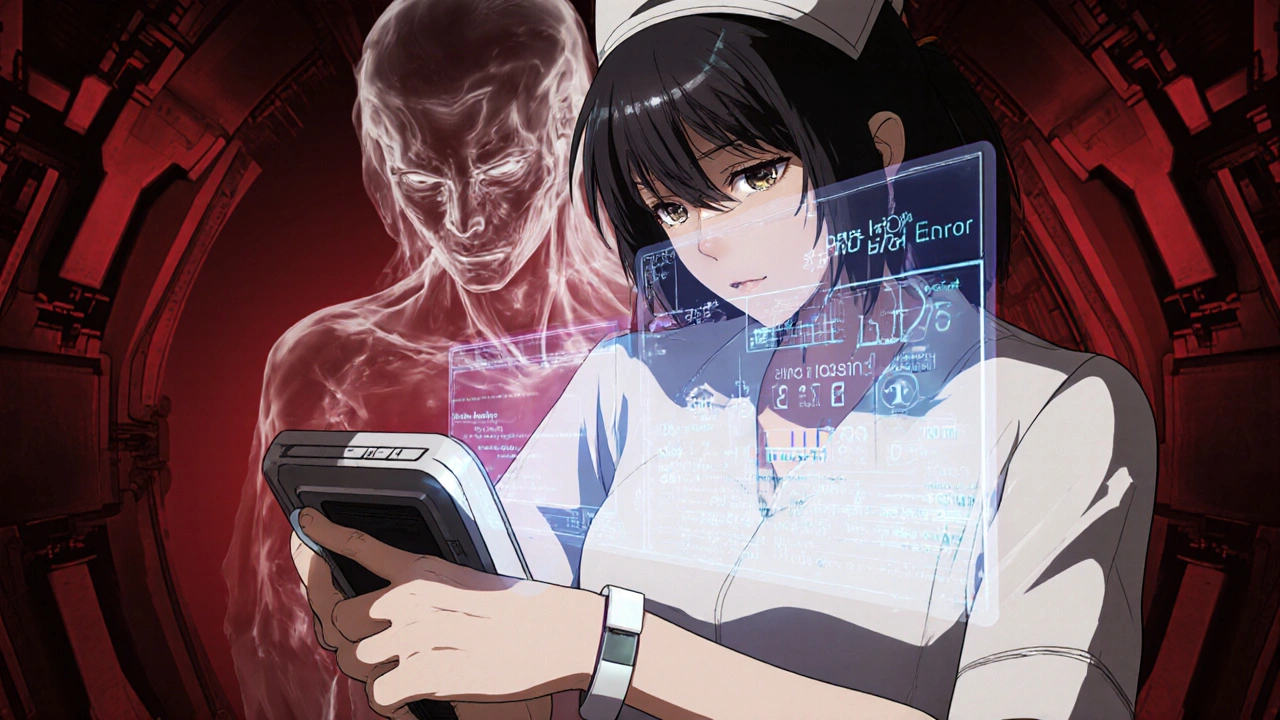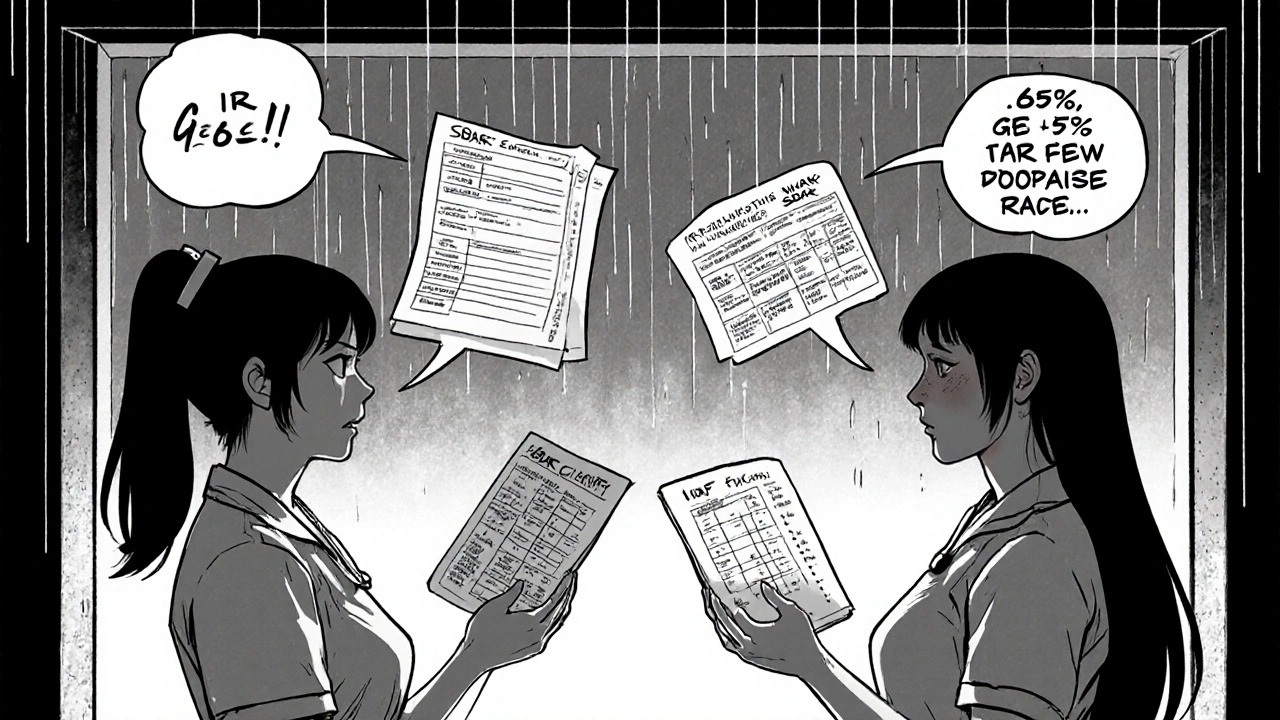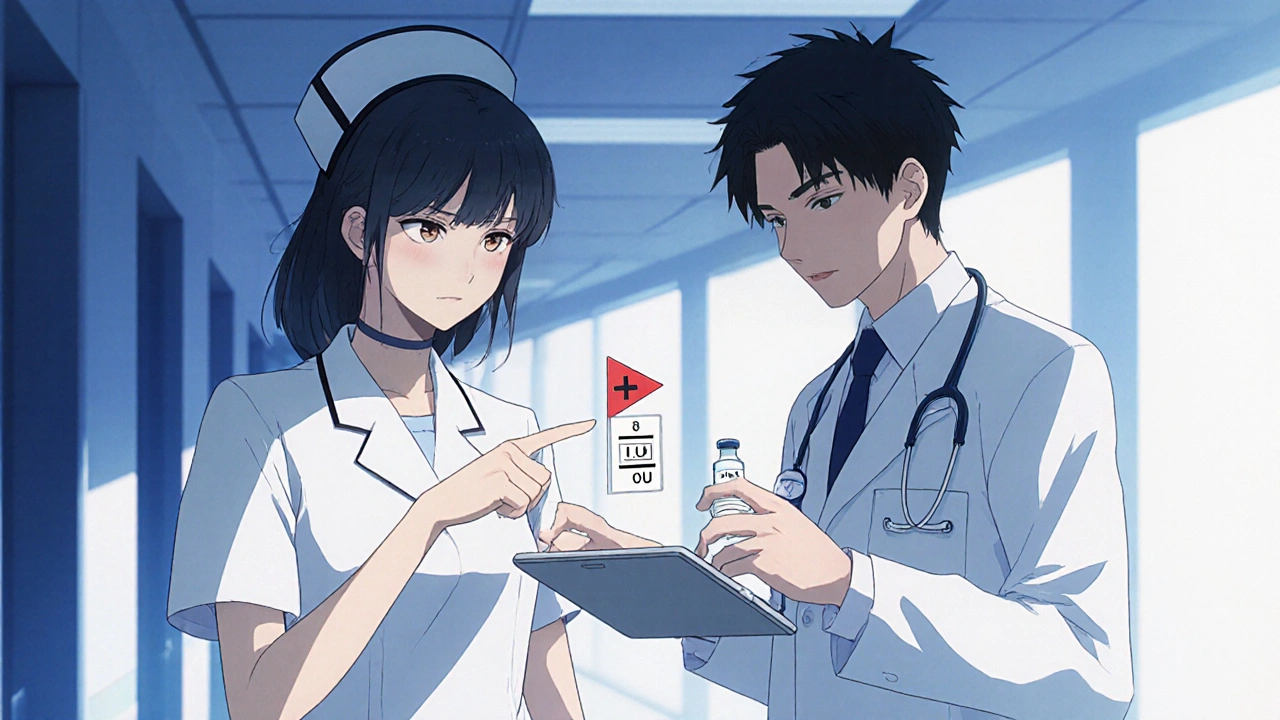Getting a medication dose wrong can kill someone. It’s not a hypothetical risk-it’s a daily reality in hospitals, clinics, and pharmacies. In 2022 alone, over 1,200 incidents of incorrect dose changes were reported, with nearly 300 leading to serious harm. The problem isn’t always a careless nurse or a sloppy doctor. More often, it’s a broken system: too many steps, too many interruptions, and too much reliance on human memory during high-pressure moments. But there’s a better way. You don’t need to work harder. You need to work smarter.
Why Dose Changes Are the Most Dangerous Moments
Medication errors don’t usually happen when a drug is first prescribed. They happen when something changes. A patient’s kidney function drops. Their weight shifts. Their condition worsens. A new doctor writes a new order. And suddenly, a dose that was safe yesterday becomes dangerous today.
High-alert medications like insulin, heparin, and opioids are especially risky. A 10-fold error-giving 10 units instead of 1-isn’t rare. In fact, one nurse on AllNurses.com shared how she almost gave 10 units of insulin because the order said “10U” instead of “1.0U.” The double check caught it. But not every team has that safety net.
The Institute for Safe Medication Practices (ISMP) calls these moments the most vulnerable. That’s why they don’t recommend double checks for everything. They recommend them for the right things. At the right time. And only when the system supports it.
The Three-Step Verification Process That Works
Forget the old model of checking everything, every time. That leads to burnout, alert fatigue, and skipped steps. The proven approach is a simple three-step process:
- Independent calculation - Two qualified staff members calculate the dose separately, without talking to each other. For pediatric doses, this means verifying weight-based calculations down to 0.1 mg/kg. For warfarin, it means confirming the INR is within target range before adjusting.
- Context cross-check - Before finalizing, verify patient-specific factors: recent lab results, fluid status, liver or kidney function, allergies, and current medications. A dose that’s safe for one patient may be lethal for another with the same diagnosis.
- Bedside barcode verification - Scan the patient’s wristband and the medication. If the system flags a mismatch, stop. Don’t override it. This step catches 86% of drug, dose, and patient errors, according to studies from the Journal of the American Medical Informatics Association.
This process takes about 5 to 7 minutes total. It’s not fast. But it’s reliable. And it’s not optional anymore. The Joint Commission requires it for high-risk medications as of January 1, 2024.
Barcode Scanning vs. Human Double Checks: What Actually Works
There’s a myth that human double checks are the gold standard. They’re not. They’re just one tool.
Barcode medication administration (BCMA) systems prevent 86% of errors in drug selection, dose, and patient identity. But they can’t catch everything. A 2018 study showed that BCMA missed 46% of infusion pump programming errors. That’s where human double checks still matter.
Here’s the truth: BCMA is best for verifying the right drug, right patient, right dose. Independent double checks are best for catching the wrong route, wrong timing, or wrong concentration. The most effective teams use both-strategically.
For example: insulin and heparin? Use both. A nurse calculates the dose. A pharmacist verifies the concentration. Then the bedside scan confirms the patient and the vial. That’s three layers of protection. For a routine antibiotic adjustment? One verification step with a quick chart review is enough.
Overusing double checks makes them meaningless. When nurses do them for every single med, they start rushing. They start talking to each other. They start clicking “confirm” without looking. That’s when errors slip through.

How Miscommunication Kills: The Silent Killer
Technology can’t fix what people don’t say. A 2023 report from The Joint Commission found that 65% of serious medication errors trace back to miscommunication during handoffs-especially during shift changes between 6:00 and 8:00 AM and PM.
Think about it: a nurse hands off a patient whose warfarin dose was just increased. The oncoming nurse doesn’t know why. She doesn’t know the INR was 3.2 yesterday. She doesn’t know the doctor plans to check it again in 24 hours. So she assumes the dose is stable. It’s not. And the patient bleeds internally.
That’s where SBAR comes in. Situation. Background. Assessment. Recommendation. It’s not a fancy acronym. It’s a script.
Instead of saying, “His warfarin’s up to 5 mg,” say: “Situation: Mr. Jones’ INR was 2.1 yesterday. Background: He’s had two clots in the last month. Assessment: We increased his dose to 5 mg to get INR between 2.5 and 3.0. Recommendation: Check INR again in 24 hours and hold if it hits 4.0.”
A 2020 study showed SBAR cuts communication errors by 41%. That’s not a small win. That’s life-saving.
The Hidden Cost: Time, Fatigue, and Why Nurses Skip Steps
Here’s the uncomfortable truth: 73% of nurses admit they’ve skipped verification steps because they were rushed. A 2022 survey by the American Nurses Association found medication errors jumped 22% during 12-hour shifts when verification was rushed.
Why? Because hospitals don’t build time for safety into the schedule. Nurses are expected to do 150 tasks in 8 hours. They’re not given 15 minutes of protected “safety time.”
Johns Hopkins Hospital changed that. They started blocking 15-20 minutes per shift for verification tasks. No pagers. No interruptions. Just time to check, confirm, and document. In one year, dose errors dropped by 37%.
It’s not about hiring more staff. It’s about protecting the time you already have.

What’s New in 2025: AI, Voice, and Blockchain
Technology is catching up. Epic’s DoseRange Advisor, launched in 2023, uses AI to flag unusual dose changes before they’re even ordered. In a 12-hospital trial, it cut inappropriate doses by 52%.
Mayo Clinic is testing voice recognition tools that let nurses say, “Verify insulin dose for patient 423,” and the system pulls up the order, the weight, the last INR, and the infusion rate-all without typing. Documentation time drops by 65%.
And in pilot programs, blockchain systems are being used to create tamper-proof logs of every dose change. Who ordered it? Who verified it? When? Why? All recorded. No edits. No deletions.
These aren’t sci-fi ideas. They’re here. And they’re working.
What to Do Right Now: A Simple Action Plan
You don’t need a million-dollar system to make a difference. Start here:
- Identify your high-alert meds - Insulin, heparin, opioids, IV potassium, chemotherapy. Focus on these first.
- Implement the 3-step verification - Calculate, cross-check, scan. No shortcuts.
- Use SBAR for handoffs - Train everyone. Make it mandatory. No more “He’s on 5 mg.”
- Protect 15 minutes per shift - No patient calls. No charting. Just safety time.
- Document everything - Time, name, verification method, patient factors. If it’s not written, it didn’t happen.
And stop doing double checks for everything. That’s not safety. That’s theater.
Final Thought: Safety Isn’t a Checklist. It’s a Culture.
Verification isn’t about compliance. It’s about respect-for the patient, for the nurse, for the pharmacist. It’s about admitting that humans make mistakes. And building systems that catch them before they hurt someone.
The best safety systems don’t make you work harder. They make you work smarter. They give you time. They give you tools. They give you clarity.
One dose change. One miscommunication. One missed step. That’s all it takes.
What’s the most common cause of dose verification errors?
The most common cause is miscommunication during handoffs, especially between shifts. Studies show 65% of serious medication errors linked to unclear or incomplete verbal or written handoffs. Poor documentation, rushed transitions, and lack of standardized communication tools like SBAR are the biggest contributors.
Are independent double checks always necessary?
No. The Institute for Safe Medication Practices (ISMP) says double checks should be used only for high-alert medications and high-risk situations. Using them for every dose leads to fatigue and complacency. Targeted use-like for insulin, heparin, or pediatric doses-is far more effective than universal application.
Can barcode scanning replace human verification?
No. Barcode systems prevent 86% of drug, dose, and patient errors, but they can’t catch infusion pump programming mistakes, wrong concentrations, or incorrect routes. Human verification is still essential for detecting those errors. The best systems combine both: barcode for accuracy, human judgment for context.
How long should a dose verification take?
A full three-step verification-calculation, context check, and barcode scan-takes about 5 to 7 minutes. For routine medications, a quick 1-minute review with the EHR may be sufficient. The key is not speed, but completeness. Rushed verification is the leading cause of missed errors.
Why do nurses skip verification steps?
Nurses skip steps primarily due to time pressure, understaffing, and lack of protected safety time. A 2022 survey found 73% of nurses admitted skipping verification during high-workload shifts. When systems don’t build in time for safety, staff are forced to choose between speed and accuracy-and speed often wins.
What’s the #1 mistake in dose verification?
The biggest mistake is assuming the order is correct without checking patient-specific factors. A dose that’s safe for one person may be deadly for another due to kidney function, weight, or drug interactions. Verification isn’t just about matching the order to the vial-it’s about matching the order to the patient’s current condition.


Mqondisi Gumede
November 25 2025Everyone talks about systems but no one talks about the fact that nurses are being treated like disposable cogs in a machine that doesn't care if they live or die